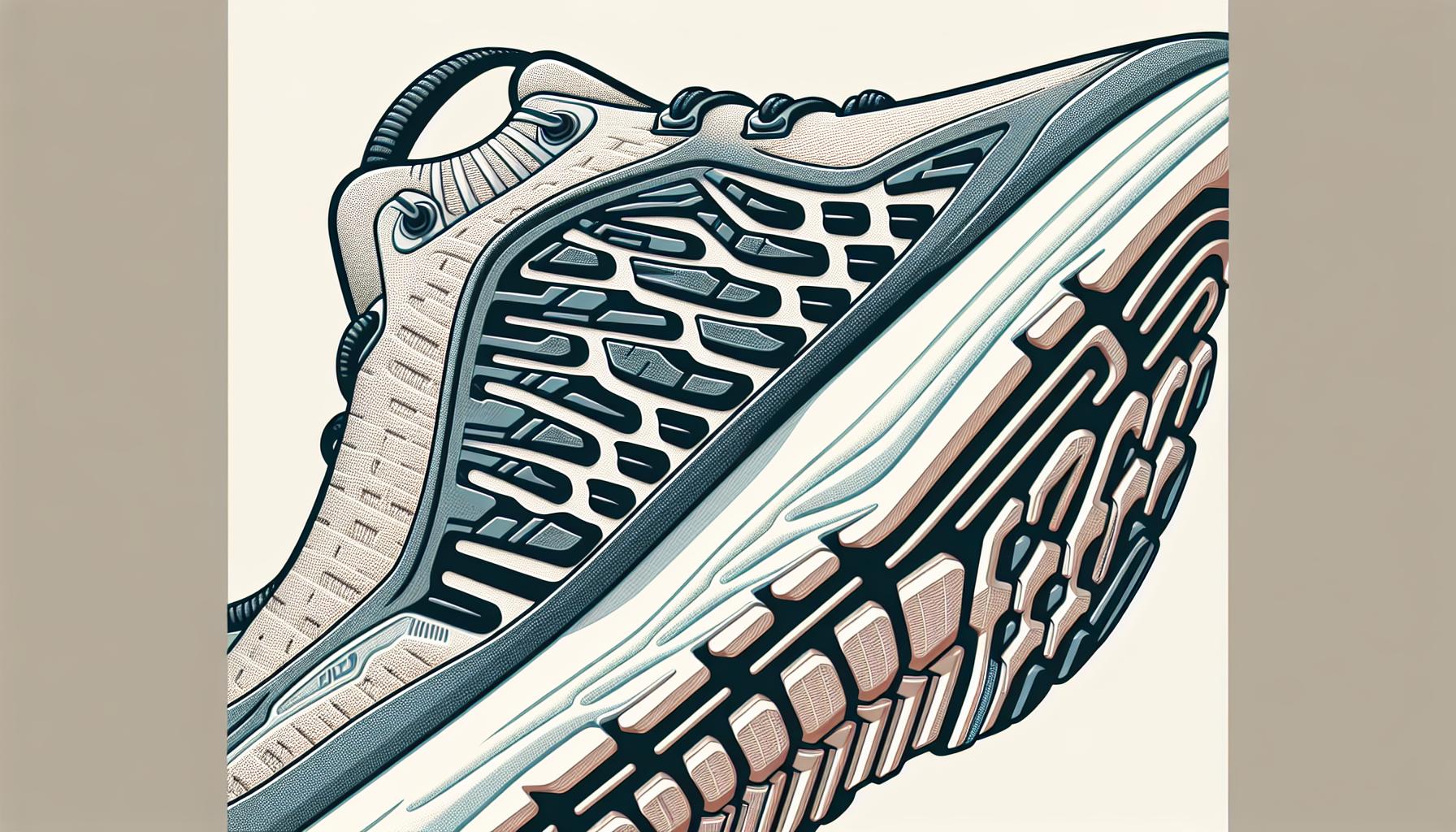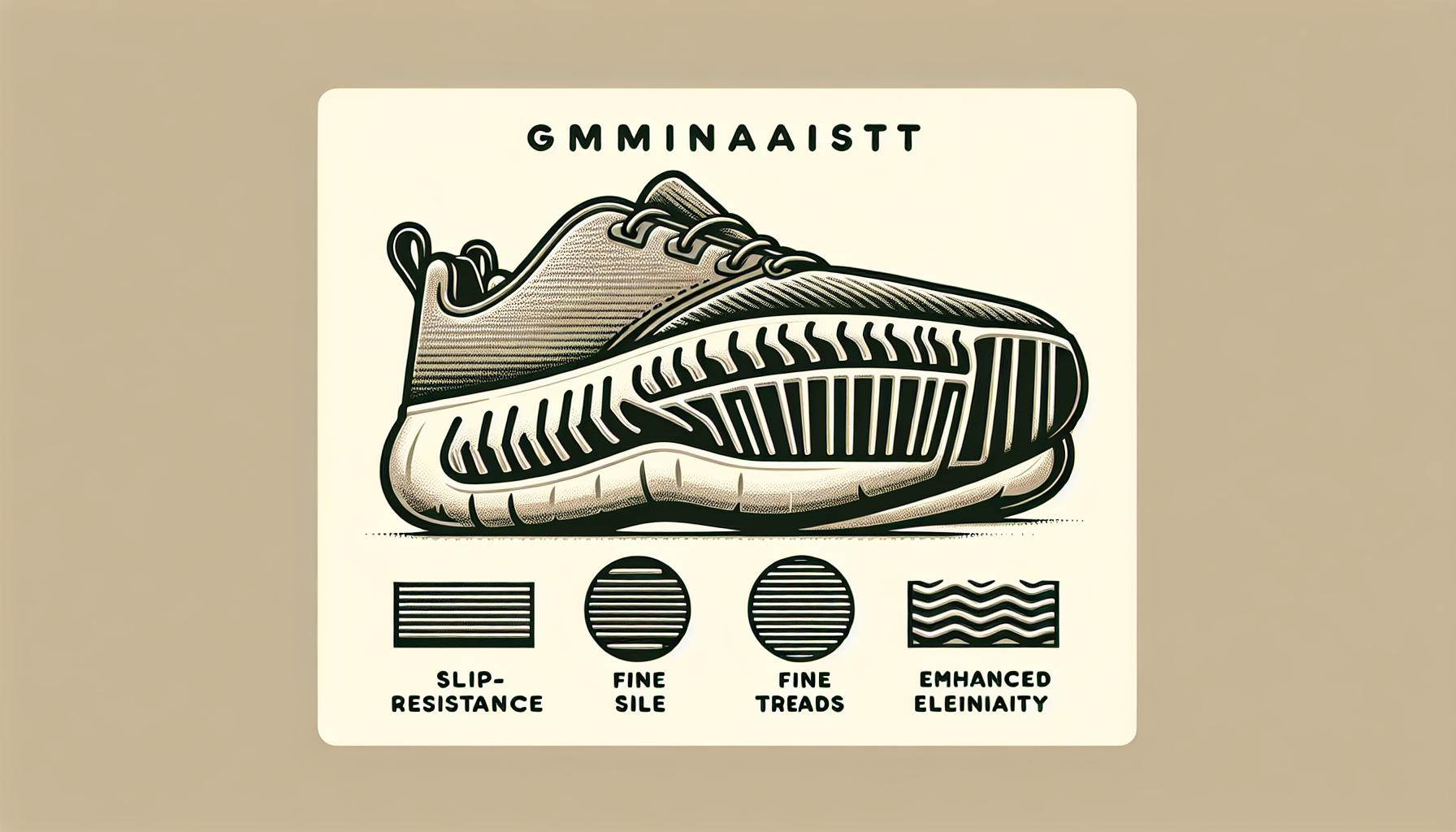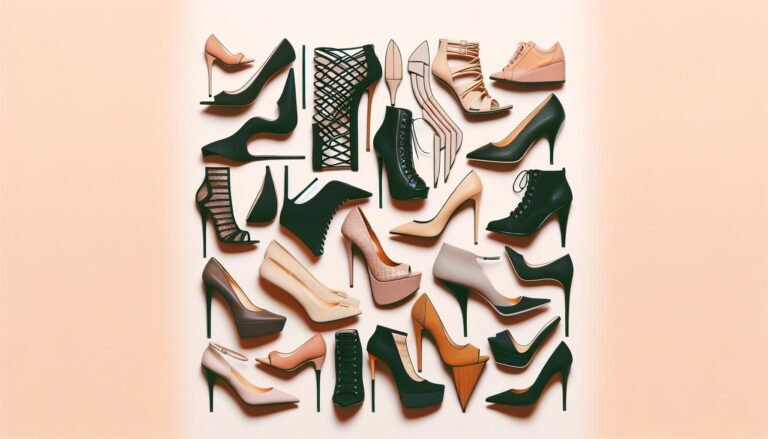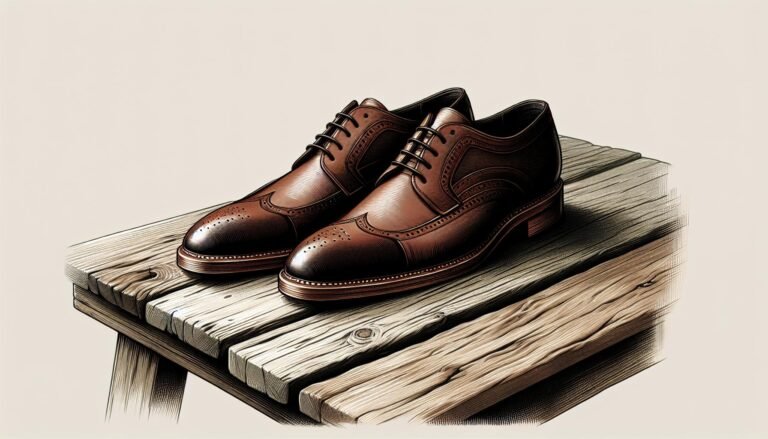Best Non-Slip Shoes for Every Environment: A Complete Guide
When I’m on the hunt for new footwear, one question always pops up: What shoes are non-slip? It’s not just about style or comfort; it’s about safety, especially in environments where spills and slick surfaces are common.
I’ve navigated through countless options, from professional work shoes to casual sneakers, all claiming to offer superior grip. But not all non-slip shoes are created equal. Whether you’re a chef, a nurse, or someone who simply wants extra stability during rainy days, understanding what makes a shoe truly non-slip is crucial. So, let’s dive into the world of non-slip footwear and figure out what sets the best apart from the rest.
Key Takeaways
- Non-slip shoes are essential for safety in slippery or wet environments, reducing the risk of falls, accidents, and ensuring better posture and foot support, especially for professionals who spend considerable time on their feet.
- The sole design, material, and quality construction play pivotal roles in making shoes non-slip, with rubber soles featuring micro-tread patterns and softer compounds providing superior grip and traction.
- Different types of non-slip shoe soles, including rubber, rubber-synthetic blends, and polyurethane, cater to varied environmental conditions and workplace demands, offering choices between grip, durability, and comfort.
- When choosing non-slip shoes, consider the specific conditions of the work environment, the durability and material of the sole, the level of comfort and support needed, and the latest advancements in sole technology for optimal performance.
- Testing non-slip shoes in real-life conditions is crucial to evaluate their grip, effectiveness over time, and suitability for different surfaces, ensuring the selection of the right shoe for the right environment based on practical performance and personal needs.
The Importance of Non-Slip Shoes

When I first ventured into environments known for their slick surfaces—think bustling kitchens, polished hospital hallways, or even rain-soaked sidewalks—I quickly realized the paramount importance of wearing non-slip shoes. It’s not simply about keeping your feet dry or your style on point; it’s about safety, performance, and peace of mind.
Non-slip shoes are designed with specialized soles that offer superior grip and traction on slippery surfaces. This feature is crucial in preventing falls and injuries, which can be both painful and costly. In fact, workplace accidents involving slips and falls are alarmingly common, leading to significant downtime and, in severe cases, long-term disabilities. By wearing the right footwear, I’m not just protecting myself from potential accidents, but I’m also ensuring that I can move confidently and efficiently, no matter the conditions underfoot.
Beyond the immediate benefits of safety and mobility, non-slip shoes also contribute to better posture and foot support over long periods. This is especially important for professionals who spend most of their day on their feet, such as chefs, nurses, and retail workers. Proper support reduces the risk of chronic problems like back pain and plantar fasciitis, underscoring the value of choosing footwear that’s not only slip-resistant but also comfortable and supportive.
The ongoing need for non-slip shoes in various professions and everyday life scenarios cannot be overstated. Whether it’s navigating a wet sidewalk during a rainstorm or moving swiftly in a high-paced work setting, the right shoes can make all the difference. With advancements in footwear technology, today’s non-slip shoes are more effective, durable, and stylish than ever, making it easier to find a pair that fits both your needs and your personal style.
Characteristics of Non-Slip Shoes

When I think about non-slip shoes, a clear image comes to mind. These aren’t your average kicks; they’re built with specific features to tackle the challenge of slippery surfaces head-on. Let’s dive into what makes these shoes stand out in the fight against slips and falls.
First and foremost, the sole design is what sets non-slip shoes apart. Rubber soles with a micro-tread pattern grab onto even the slickest surfaces, offering unparalleled traction. This specialized tread reduces the risk of sliding, making them a staple for anyone working in wet or oily environments.
Another key characteristic is the material of the outsole. Non-slip shoes often feature soles made from softer, more flexible rubber compounds. This allows the shoe to have more contact and grip on the floor, which translates to better slip resistance. Whether it’s a fast-paced kitchen or a busy hospital floor, these materials make a noticeable difference in safety and confidence.
Additionally, the build quality and design play a crucial role. Non-slip shoes are engineered to offer support and stability. This means not just focusing on the sole, but also on how the shoe supports the arch and cushions the foot. Proper support ensures that the wearer can move confidently and comfortably, minimizing the risk of accidents related to fatigue or improper foot alignment.
Furthermore, durability is a hallmark of these shoes. Given their usage in demanding environments, non-slip shoes are designed to withstand wear and tear. High-quality materials and construction mean these shoes not only offer safety but also a long service life.
I’ve found that understanding these characteristics is key when selecting the right non-slip shoes for my needs. Whether I’m gearing up for a shift in the kitchen or prepping for a hospital round, knowing what to look for makes all the difference.
Types of Non-Slip Shoe Soles

When diving into the world of non-slip shoes, understanding the different types of soles is key to finding the perfect pair. I’ve learned that not all non-slip soles are created equal, and the specifics can significantly impact their effectiveness in various environments.
Firstly, rubber soles dominate the non-slip shoe market due to their natural slip resistance. Rubber is a versatile material that, when designed with micro-treads or complex patterns, dramatically enhances grip on wet and oily surfaces. This makes rubber soled shoes a popular choice in kitchens, hospitals, and industrial areas where spills are common.
Another notable type includes soles made from a blend of rubber and synthetic compounds. These soles are engineered to offer additional benefits like enhanced durability and resistance to extreme temperatures. This blend often contains materials like TPU (Thermoplastic Polyurethane) which adds strength without sacrificing the slip-resistant qualities of the sole.
Polyurethane soles represent another category, prized for their lightweight and durable nature. While slightly softer than rubber, polyurethane offers excellent slip resistance and is incredibly comfortable for long hours on your feet. It’s an ideal choice for professionals in healthcare and those who need to move quickly without slipping.
I’ve also noticed that more innovative soles are emerging, incorporating advanced technology and materials to boost slip resistance. For instance, some brands utilize nanogrip technology, which provides superior traction on slick surfaces by increasing the surface contact area of the sole.
Each type of non-slip sole comes with its own set of advantages, tailored for different environments and preferences. Understanding the specific features and benefits of these soles can greatly aid in selecting the right non-slip shoes for your needs.
Choosing the Right Non-Slip Shoes

When it comes to selecting the perfect non-slip shoes for my own use, I’ve realized it’s all about understanding the specific needs and where I’ll be using them. Here are some factors that have helped me make informed decisions, and I’m confident they can guide you as well.
Firstly, it’s vital to consider the environment where the shoes will be predominantly used. I’ve discovered that workplaces like kitchens, hospitals, and manufacturing plants each have unique challenges and hazards. Rubber soles with micro-treads are almost always my go-to for wet and slippery floors common in kitchens and hospitals. These soles provide excellent traction and reduce the risk of slips and falls dramatically.
Another point I’ve always kept in mind is the durability and material of the sole. Blends of rubber and synthetic compounds offer a fantastic balance between slip-resistance, durability, and temperature resistance. They’re particularly well-suited for environments that fluctuate between extremely hot and cold conditions, which is something to consider if your workplace experiences such variations.
Comfort and support cannot be overstated. I always look for shoes that offer adequate arch support and a cushioned footbed. Long hours on my feet mean that comfort isn’t just a luxury; it’s a necessity. Shoes featuring polyurethane soles are lightweight and provide an added level of comfort without compromising on slip-resistance.
Finally, I pay attention to the advancements in sole technology. Shoes incorporating nanogrip technology are an emerging trend that promises enhanced traction on even the slickest surfaces. While they might be a bit more of an investment, for anyone working in environments where slips are a high risk, they could be well worth it.
Remember, the key to choosing the right non-slip shoes lies in identifying your specific needs based on your work environment, considering the materials and technology of the shoe, and not overlooking the importance of comfort and support.
Testing Non-Slip Shoes

When it comes to selecting non-slip shoes, the proof, as they say, is in the pudding. I’ve always believed that you can’t just take a brand’s word for it; you need to see how these shoes perform in real-life situations. That’s why I’ve dedicated time to testing various non-slip shoes in different environments to see which ones truly stand up to the challenge.
My testing process involves a series of practical experiments. First, I examine the shoe’s overall design and material composition, focusing on the sole since that’s where the magic happens. Then, it’s time to put them to the test. I’ve walked on slippery surfaces like polished floors, wet tiles, and even greasy kitchen floors to see how each pair handles. It’s crucial to assess not only the immediate grip but also how the shoes perform over time as wear and tear set in.
One aspect I pay close attention to is the effectiveness of the tread pattern. Shoes with micro-treads tend to offer better grip on smooth surfaces, while those with larger, more spaced-out treads are better for rough terrains. Through my testing, I’ve found that the best non-slip shoes often strike a balance, providing reliable traction in both scenarios.
Here’s a brief overview of my findings:
| Shoe Type | Immediate Grip | Long-Term Performance | Best For |
|---|---|---|---|
| Rubber Sole Shoes | High | Moderate | Kitchens, Hospitals |
| Synthetic Blends | Moderate | High | Varied Conditions |
| Polyurethane Soles | Low | High | Office, Casual Wear |
What’s evident from these tests is that no single shoe fits all situations. It’s about matching the right shoe to the right environment, taking into account not just the sole but also factors like comfort, durability, and material. Remember, the goal isn’t just to avoid slips; it’s to ensure that you’re comfortable and supported throughout your day.
Conclusion
Choosing the right non-slip shoes isn’t just about preventing slips; it’s about finding the perfect blend of safety, comfort, and durability that suits your specific environment. Through my testing, I’ve discovered that while rubber soles shine in wet areas like kitchens, synthetic blends adapt well to a variety of conditions, and polyurethane soles are the go-to for those seeking both safety and style in less demanding environments. Remember, the best shoe for you is one that meets your needs without compromising on safety or comfort. So before you make your next purchase, consider where you’ll be wearing them most and let that guide your choice. After all, the right pair of non-slip shoes can be a game-changer for your daily comfort and safety.
Frequently Asked Questions
How are non-slip shoes tested for performance?
Non-slip shoes undergo practical experiments focusing on the design and material of the sole. The testing measures immediate grip and long-term performance across various surfaces to determine their effectiveness in real-life environments.
What makes rubber sole shoes ideal for kitchens and hospitals?
Rubber sole shoes provide excellent grip and durability, making them ideal for the slippery and fast-paced environments of kitchens and hospitals. Their material composition offers superior traction on wet or greasy floors.
Are synthetic blend non-slip shoes versatile?
Yes, synthetic blend non-slip shoes are suitable for varied conditions due to their adaptive material composition. These shoes can perform well in different environments, offering a good balance between grip, durability, and flexibility.
Why are polyurethane soles recommended for office and casual wear?
Polyurethane soles are recommended for office and casual wear because of their durability, comfort, and moderate grip. They offer sufficient support and safety for daily use in less demanding environments compared to more industrial or specialized areas.
What is the key takeaway when choosing non-slip shoes?
The key takeaway is to match the right non-slip shoe with the specific environment in which it will be used. Consider factors like comfort, durability, material, and specific conditions of the workplace or intended use area to ensure optimal support and safety.




